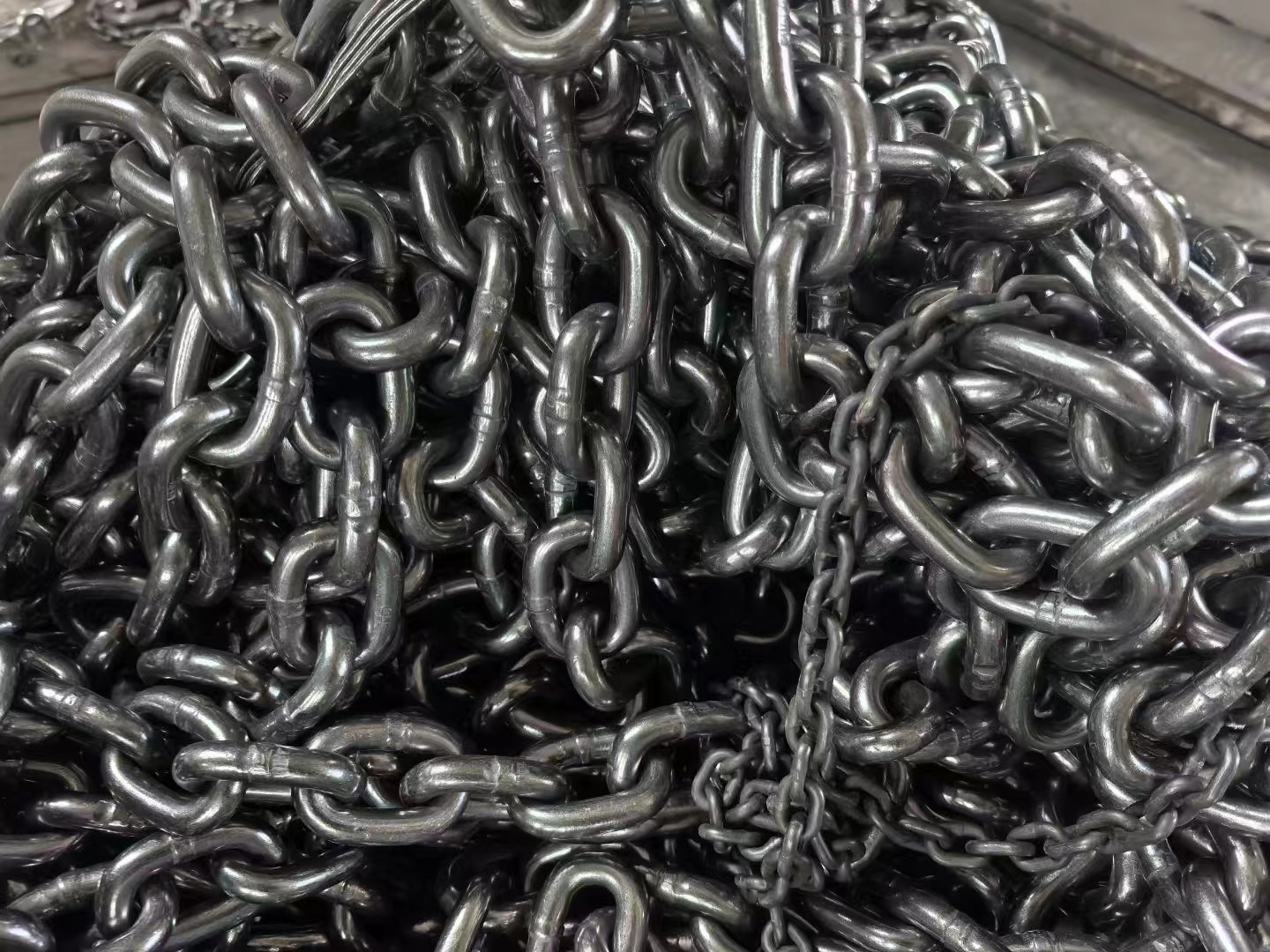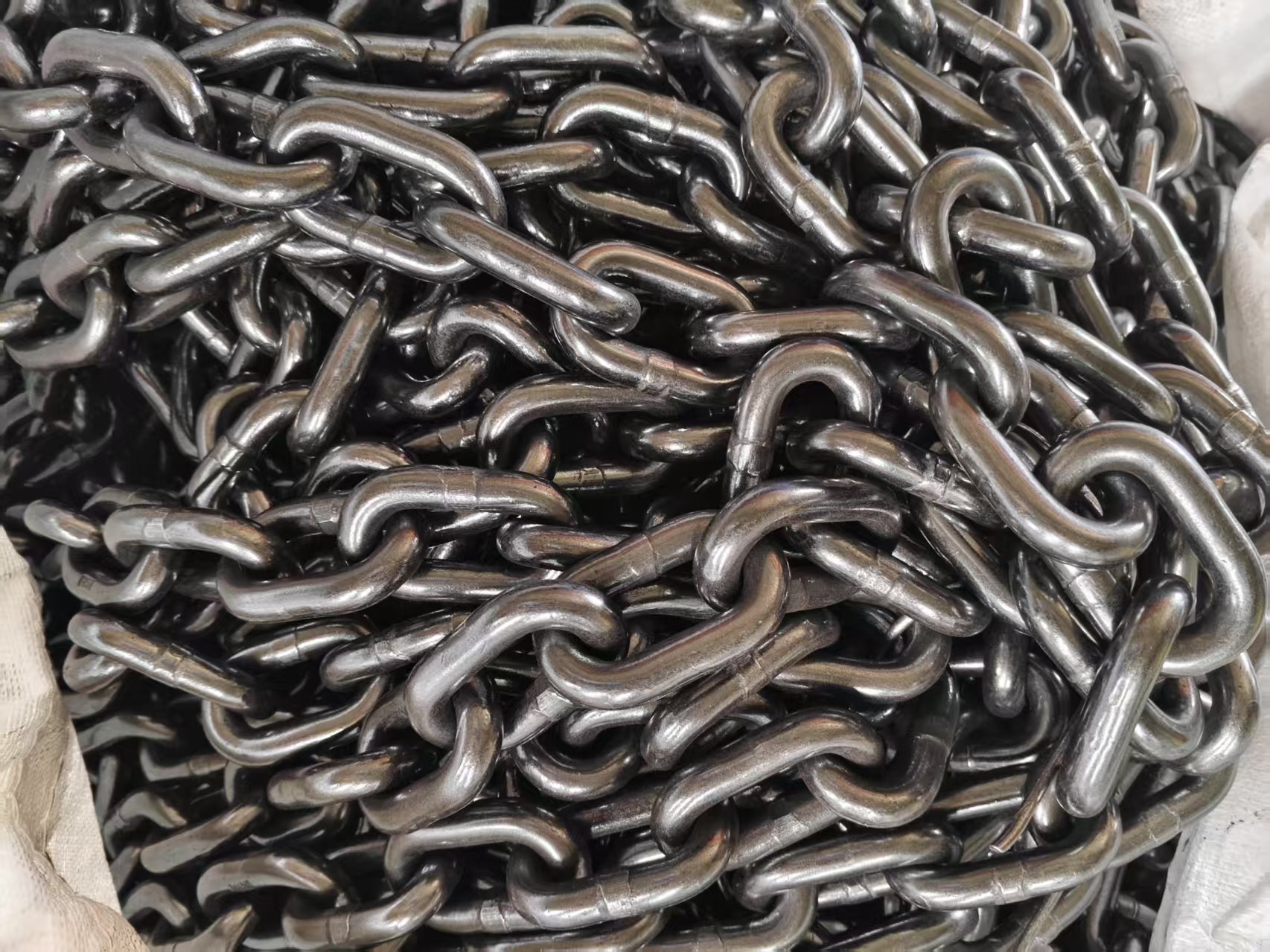Our staff will contact you within 12 hours, You can also contact us through the following ways:
Contact US WhatsApp: +8618766656705
- Email: [email protected]
- Tel: +8618766656705
- Web: https://www.toponechain.com/
Shops run fast, decks stay windy, and loads rarely hang level, so you need clear rules that cut through guesswork. A black lifting chain usually wears a black-oxide or phosphate finish that hides grime and resists light corrosion; yet finish alone never proves strength. Certified lifting chains carry stamps, tags, and test records that tie real Working Load Limits (WLL) to recognized standards. This guide explains what the black finish does, what certification actually covers, where each chain wins, and how to control angle, hardware, and inspection so every pick stays inside the numbers.


Manufacturers treat alloy chain with black-oxide or phosphate to reduce glare, resist light surface rust, and keep stamps visible. Crews like the look because dirt hides, links wipe clean, and inspectors read marks easily under shop lights. You still confirm performance from grade, size, and WLL, not color. Read the link stamp (often “8” for Grade 80 or “10” for Grade 100), then read the sling tag for WLL by hitch and angle. When a finish looks black but stamps conflict, you trust the marks and the tag, not the paint.
Certified lifting chains connect markings, documents, and proof loads into one traceable story. You look for:
A sling tag that cites a standard such as ASME B30.9 or EN 818-4, lists WLL by hitch and angle, and shows serial or batch ID plus manufacturer ID.
Grade stamps and size stamped on links; WLL stamped on hooks and shackles.
A proof-test record from the maker or a qualified lab.
This package lets crews show auditors exactly why a sling carries a given WLL at a given angle.
The right finish and alloy cut your cleanup time and extend service life, but geometry and markings still rule capacity.
Indoor fabrication and maintenance: a black lifting chain in Grade 80 or 100 runs clean, shrugs off sparks, and keeps stamps easy to read.
Coastal yards and splash zones: a zinc–nickel coated alloy chain saves time because salt wipes off faster; you still rinse and oil pivots after the shift.
Washdown and chemical plants: stainless G80 (304/316) fights pitting and keeps surfaces clean; match stainless hooks and shackles to limit galvanic attack.
Hot work nearby: follow the maker’s temperature curve and log any heat exposure in the sling record.
Chain Type | Typical Standard on Tag | Typical Finish | Where It Works | Key Checks |
Black lifting chain (G80/G100) | ASME B30.9 / EN 818-4 | Black-oxide or phosphate | Shops, yards, general lifts | Grade stamp on link; WLL by hitch/angle on tag |
Certified lifting chains | Same as above + proof-test record | Finish varies; color never equals grade | Overhead lifting with audit needs | Serial/batch ID; proof-test sheet; maker ID |
Zinc–nickel coated alloy | ASME B30.9 / EN 818-4 | Silver/gray plated | Coastal/splash zones | Rinse after salt; inspect pivots |
Stainless G80 (304/316) | ASME B30.9 / EN 818-4 | Uncoated stainless | Washdown/chemical | Match stainless fittings; check pitting |
Confirm exact WLL on the sling tag before any pick.
Angle multiplies tension faster than any other variable, so you measure rather than guess. Plan a 60° included angle whenever space allows. If headroom squeezes, fit a spreader or shorten legs evenly so you reopen angle and hold WLL.
Two-leg quick check
Tension per leg = Load ÷ (2 × sin θ), where θ equals the angle from vertical of one leg.
Three-/four-leg planning
Assume three legs carry while the fourth balances; size diameter and hooks from the sling tag’s angle table.
Then build a single rating language from hook to load:
Seat a master link that clears the crane latch; keep inside width ≥ 5× chain diameter.
Fit hooks with throat opening ≥ 4× chain diameter so links seat in the bowl without pinch.
Choose self-locking hooks for long travel, wind, or pauses mid-air; keep spring-latch hooks for short, protected moves.
Use bow shackles when legs may sweep; run the pin through the hardware and face the bow toward the legs.
You set beams, tilt columns, and move gearboxes through tight steel. Black-oxide or phosphate helps links resist flash rust and makes stamps readable after grinders throw sparks. Crews also like the way black finishes hide shop grime, which keeps inspections quick. You still treat the finish as cosmetic: you size from the grade stamp, you read the tag table, and you document every pick.
Auditors want numbers, not color. Certified slings shorten audits because the tag, stamps, and proof-test match. Maintenance teams also move faster because crews find WLL tables at the hook, not in a binder across the plant. When projects cross borders, certification tied to recognized standards helps buyers approve the rig package without rework.
You finish a short, repeatable routine before the first pick:
Tag & traceability: read grade, WLL by hitch, angle table, serial, maker ID.
Pitch growth: measure five consecutive links under light tension; retire legs that exceed the maker’s elongation limit.
Crown wear: gauge link diameter; retire legs that cross the published wear limit.
Hooks & latches: cycle the latch ten times; confirm positive closure and correct throat opening; reject cracks at the saddle or neck.
Shorteners & shackles: inspect pocket sidewalls, pins, and threads; replace bent or peened parts.
Snap photos of stamps and store certificates with the sling file so any audit ends quickly.
Lay the sling flat and roll links until grade stamps face up. Seat the master link in the crane hook and close the latch. Hook into rated padeyes or shackles, then pull snug and measure the angle with a card or an inclinometer. Fit a spreader or shorten legs until you hold the plan angle. Lift 150 mm, pause, re-check latches, balance, and clearances, then travel. Land straight, release tension, and unhook in reverse order.
Trusting color over stamps. Read the tag and the steel; color only helps with housekeeping.
Guessing at angle. Use a card or a digital meter and adjust with shorteners or a spreader.
Mixing grades. Keep links, hooks, shackles, and shorteners in the same grade family; the lowest grade rules the assembly.
Skipping edge protection. Add guards before the lift, not after the scar.
Read stamps, match components by grade, measure angle with tools, protect edges, and log inspections, and both black lifting chain and certified lifting chains will carry demanding lifts with control and traceability—contact TOPONE CHAIN today for certified alloy chain slings and documentation that fit your next job.